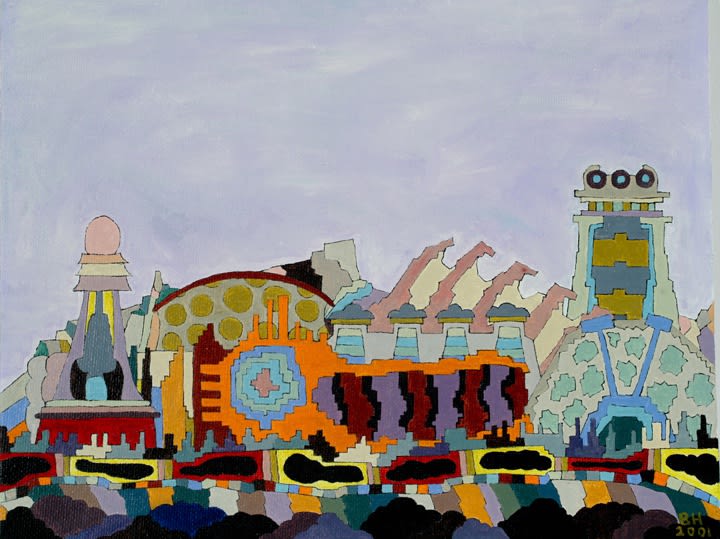
Through June 5, 2010, Ricco/Maresca is presenting “New Works,” an exhibition of paintings by Ben Hotchkiss, a self-taught artist who has developed a singular style of abstract painting in watercolor on paper and in oil on canvas board.

Untitled (Villages), circa 2001-2002, oil on canvas board, 11 ins. x 14 ins.
In Hotchkiss’s compositions, patchworks of random patterns spread out across and fill each painting’s pictorial space, creating passages of color and visual texture that are sometimes tightly woven together and sometimes loosely conjoined in unpredictable combinations.

Untitled (Villages), circa 2001-2002, oil on canvas board, 11 ins. x 14 ins.
Hotchkiss’s free-form art-making method might be said to reflect his approach to life itself. A self-styled “rolling stone” who, as he says, once “spent a couple of years in California taking in the hippie experience,” Hotchkiss was born in Connecticut in 1945 and grew up there. (His father was an oil painter and watercolorist). For years, he worked at odd jobs in several different cities around the U.S. before eventually returning to his home state.
Hotchkiss believes there is “something mystical” about an artist’s ability to give thoughts and emotions visible form
Although he made drawings and watercolors as a teenager, for many years Hotchkiss made no art at all. Later, as an adult, he returned to making art. Inspired by his father, he became “keenly aware” of the power of visual expression and recognized that there is “something mystical” about any person’s “intuitive faculties,” as he puts it, and about an artist’s ability to give visible form to thoughts and emotions.

Untitled (Abstract Landscape), circa 2001-2002, oil on canvas board, 8 ins. x 10 ins.
In his new works, Hotchkiss continues to explore the expressive potential of his own visual language—and to invite viewers to find their own personal points of reference among his flowing colors and abstract forms.